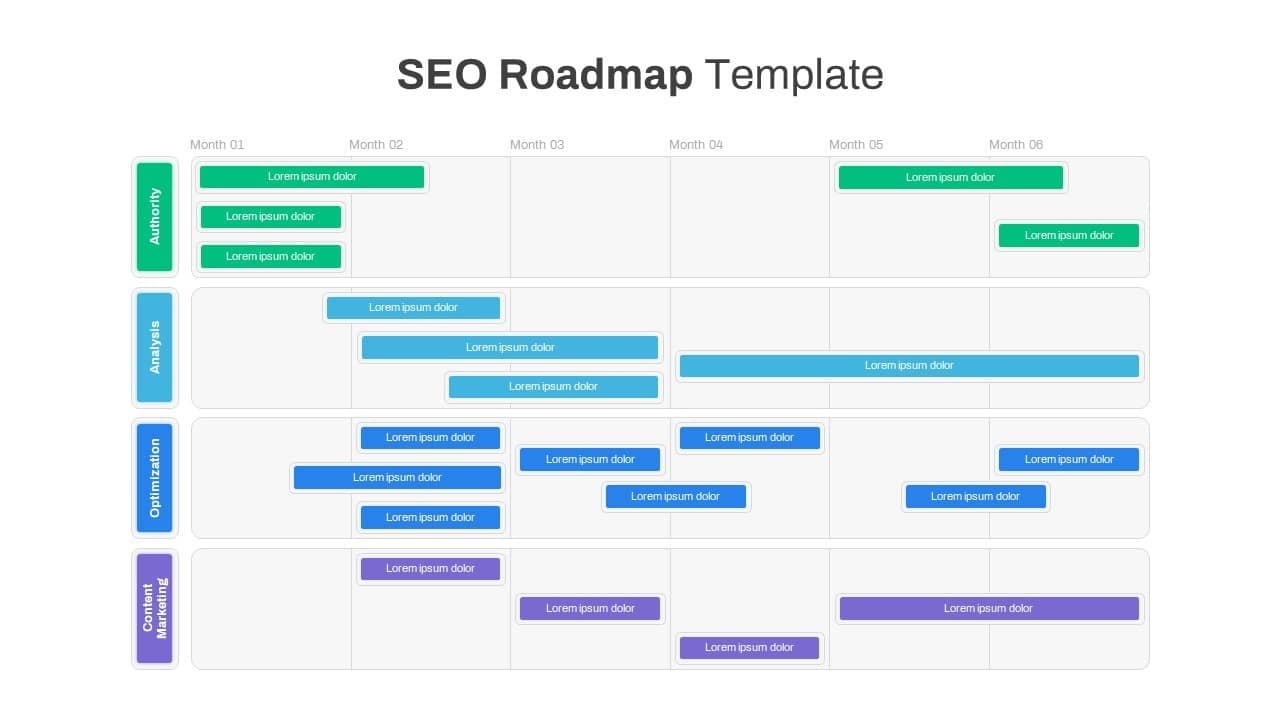Last Updated on October 7, 2024 by Admin
The SEO roadmap is one of the most significant documents in the SEO campaign, and it should be created in detail. It makes your SEO plan look more professional and can also serve as a tool for implementing your SEO activities. An SEO roadmap is your blueprint for this, as it offers a framework for the optimization process and acts as a process for task sequencing.
According to research, companies with integrated SEO enjoy a close rate of 14.6%, which is much higher than the 1.7% close rate of conventional SEO services. This blog post will give you the simple steps to develop an SEO strategy roadmap and download a free template.
What Is an SEO Roadmap?
An SEO roadmap is a written plan that outlines the different strategies for enhancing a website’s search engine results. This roadmap should include activities, schedules, and the people who will work on the project.
It is necessary to meet your specific SEO needs. Struggling with it can obstruct your progress toward your core organizational goals and objectives.
It is advisable to use a Google Sheet or any project management tool to develop a framework for SEO. Here’s an example of what it might look like:

What are the benefits of an SEO roadmap?
Here are a few ways an SEO roadmap helps you:
1. Simplify Complex Tasks
An SEO roadmap breaks down the entire SEO process into chunks that are easier to handle.
For instance, what is typically expressed as the broad goal of “marketing for SEO” may begin with, say, keyword identification. Then, depending on the results of the website traffic analysis, the roadmap may move on to optimizing specific pages or posts.
2. Prioritize High-Impact Efforts
Having a roadmap ensures that you can make the right decisions by targeting the activities that will bring the most benefits. It helps you avoid spending time on activities that will not make a difference in the organization.
For instance, if most of your organic traffic is driven by a few exceptional web pages, a roadmap may include improving this content before creating new ones.
3. Incorporate the Changes in the Search Engine
Your roadmap is not something you create once and then put on a shelf to gather dust; it is dynamic and evolving. Thus, you can modify it based on the changes in the search engine algorithms. To avoid instances where the SEO strategies negatively impact your website’s rankings and do not function effectively in the long run.
For example, if Google starts caring more for the UX of the sites in the future, your plan may shift towards improving navigation with menus that are easy to use to the top of all other concerns.
How to Create and Use an SEO Roadmap
Developing an SEO strategy requires integrating multiple steps. Here are the activities to guide you in developing and deploying your SEO roadmap.
1. Gather Key SEO Insights
Before proceeding with the development of your strategy, it is advisable to audit the results obtained so far. Analyze the market to understand the existing content and the possibilities of finding keyword targets. Carry out a technical SEO analysis to discover any problems that affect your site, such as broken links or slow page speeds. Check your backlink profile to conceptualize where you are in terms of competitors.
2. Choose Your SEO Techniques
After considering your business goals, you should consider the types of SEO you want to employ. As we have discussed above, when selecting an SEO strategy, you should choose those that will assist you in achieving your objectives.There are several SEO tactics you can implement, such as:
- Local SEO
- Keyword implementation
- SEO content creation
- Link building
- Voice search optimization
- Mobile-friendly optimizations
- User experience optimizations
- Page speed improvements
- And more
For instance, if you need people to visit your business location, you must optimize your business for local SEO.
Maybe you are interested in boosting your company recognition and need more visitors to your site. A well-thought-out SEO content plan can initiate more chances of positioning your business at the top of the search results every time your target market requires answers and solutions.
3. Identify Key Tasks and Workstreams
Reflecting on the SEO recommendations developed above, suggest a list of tasks and workstreams comprising your SEO plan. These may include revising and enhancing the existing content for higher ranking of the targeted keywords, developing new content focusing on high-value keywords, fixing technical problems, getting high-quality backlinks, etc. It is recommended that your team engage in this process to ensure that all the angles of the situation are viewed.
4. Refine Your Task List
Go through your to-do list and categorize your tasks, referring to SEO categories like on-page SEO, content creation, technical SEO, and link building. Divide the large-scale assignments into micro components to make them easier to handle. Each task should be clearly described, quantifiable, and directed toward achieving the established SEO objectives.
5. Prioritize Tasks Logically
Not all the tasks you must perform are of the same priority level and may not require immediate attention. Prioritize tasks using the Action Priority Matrix, which divides tasks by importance and the amount of work needed to complete them. Implement small changes with big effects before proceeding to large-scale changes that require more time. Always bear in mind that there are short-term advantages and long-term plans.
6. Allocate Time and Resources
Allocate reasonable time frames and resources to each of the activities in the plan, assuming, for example, the number of people in the team, their load, and the internal relations of the tasks. One thing that should not be lacking is the incorporation of certain buffers to allow for some slack in case of the emergence of new barriers or shifts in priorities. Monitoring progress and modifying the time frame is important.
7. Format Your Roadmap for Clarity
You should organize your roadmap like a Gantt chart to make it easily understandable and trackable. Create a simple document on Google Sheets or a project management tool where everyone can read and share the project status. Some recommended columns are tasks, timelines, assignees, and status. Perhaps you could develop several views based on the needs of different clients.
8. Continuously Review and Update
It is recommended that you develop your SEO roadmap as a dynamic document that is adjusted with your business and the search environment. Conduct periodic meetings to evaluate performance and check if changes need to be made. Always have a reason to rejoice or to reflect on failures. Remind stakeholders of your activity levels and the value of the SEO work that you are doing.
Final thoughts
Developing an SEO roadmap is a crucial process that will define your future organic traffic growth. Following the guidelines presented in this guide and using the free template, you will be able to create a detailed, practical, and effective strategy that corresponds to your objectives. SEO is a long process and make sure to remain flexible, respond to changes, and always improve your strategy.
However, at AlgoSaga, we know that a good SEO roadmap is a solid strategy that has been discussed above. Our team of professionals is willing to guide you and your business through the roughs of SEO and make it successful. Whether you require assistance in formulating your strategy or complete service in SEO, AlgoSaga is ready to unlock your online possibilities.
